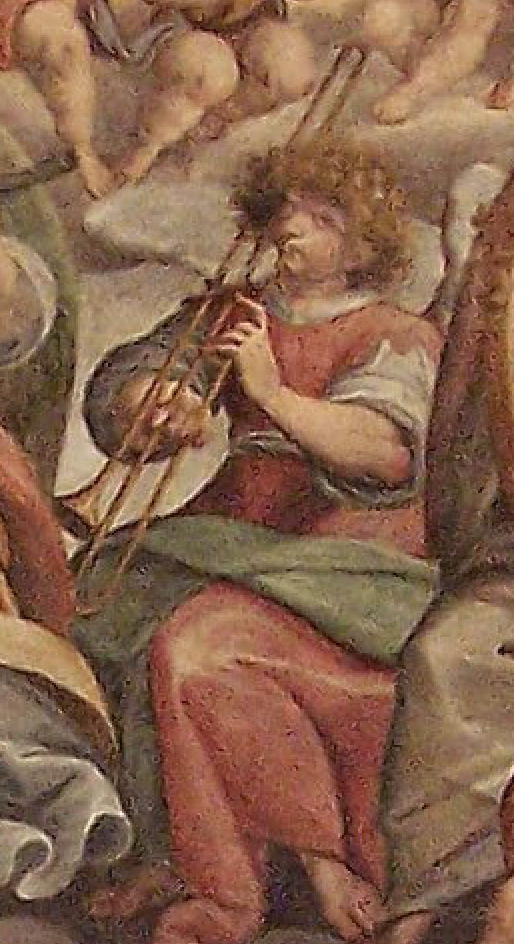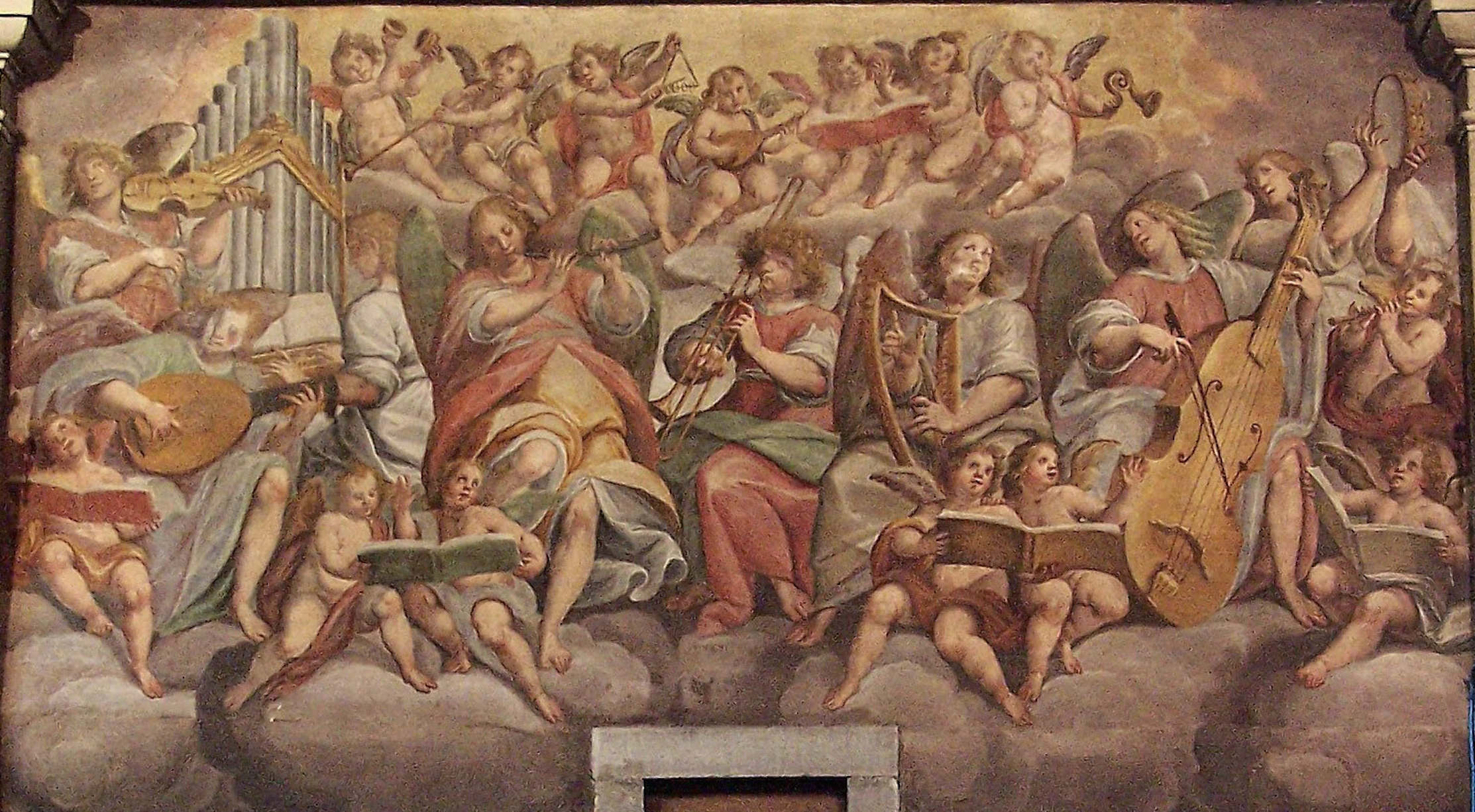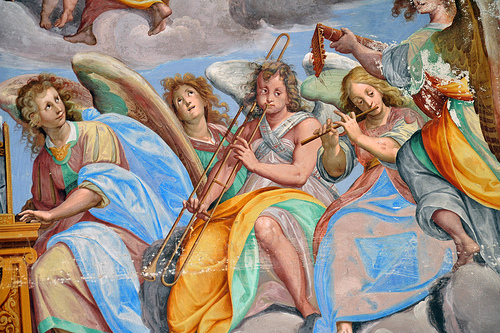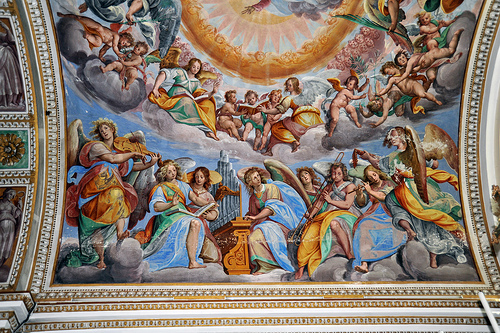I recently added the top images and caption shown below (c. 1620) to the Trombone History Timeline (17th century—1st half).
The same artist has another painting, also featured in the timeline, that includes an angel trombonist. I have included that painting below (c. 1608). Notice the similarity in grip and unusual instrument dimensions (the biggest problem being the extended bell section, although there are other problems as well). In the case of these two paintings, I would surmise that the grip and dimensions of the trombones probably have more to do with the individual artist’s conception than actual historical reality.
c. 1620—Bienno, Italy: A painting by Giovanni Mauro della Rovere (also known as Fiammenghino) in the Chiesa Parrocchiale de Bienno includes a depiction of an angel playing trombone among a large group of angel musicians (see detail and full image below; public domain).

1608—Gravedona, Italy: Glory of God the Father and the Angels, a fresco by Giovanni Mauro della Rovere (also known as Fiammenghino), located in the Church of Santi Gusmeo e Matteo, includes a depiction of what could be a trombone. The instrument has characteristics of both slide trumpet and trombone; it could simply be an awkwardly-rendered depiction of either instrument. Other nearby angel-musicians play viol, organ, flute, and lute (see close detail and wider detail below; public domain) (Angelis 43).
